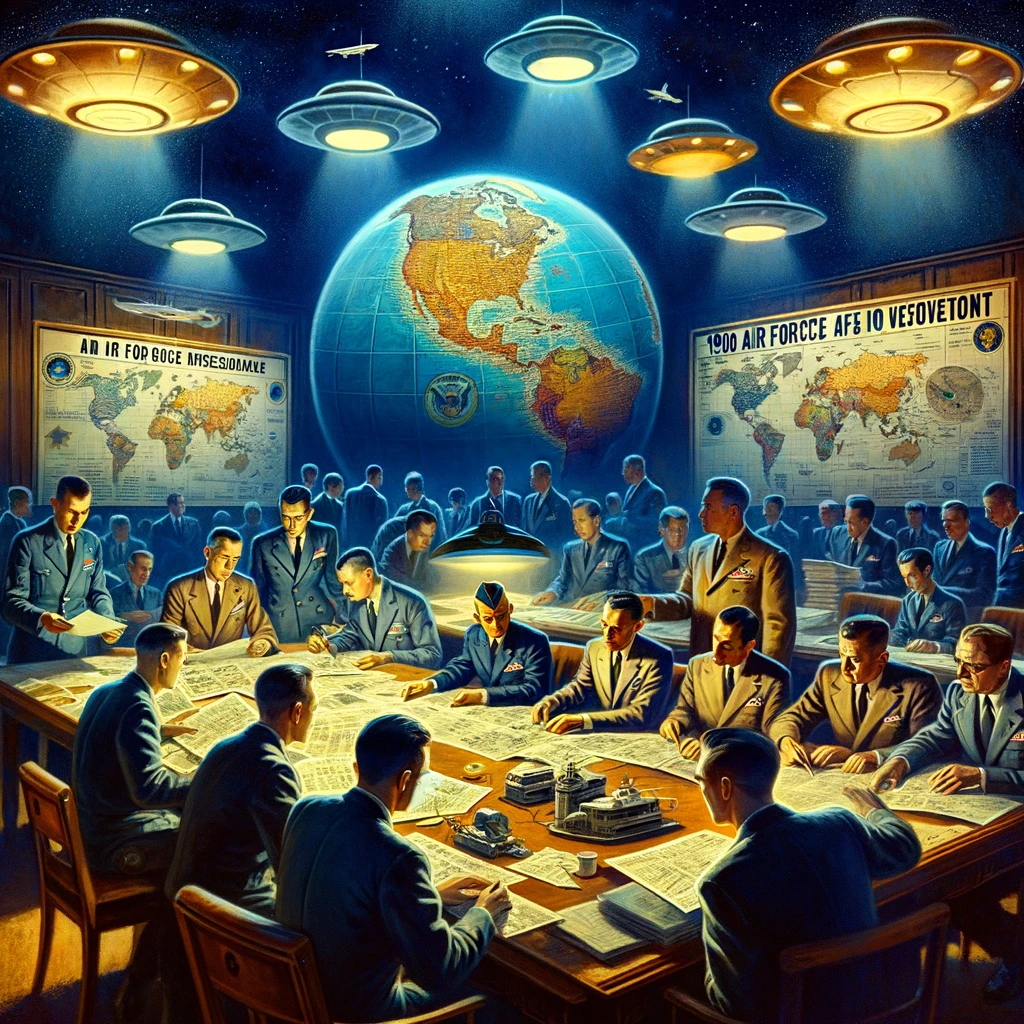Fact Sheet Air Force UFO Report

The document is a fact sheet from the Department of Defense, specifically the Office of Public Affairs, dated July 21, 1960. The document titled CIA-RDP81R00560R000100040013-4 presents an in-depth report by the Department of Defense on the Air Force’s examination of Unidentified Flying Objects (UFOs) in the initial six months of 1960. It meticulously catalogs the investigation and assessment of 173 sightings, stressing the methodical and scientific methodology applied to ascertain potential explanations, with many incidents remaining inconclusive due to the absence of corroborative testimonies.
The report notes a marginal decline in UFO sightings from prior periods and highlights the global nature of these reports, especially from the Pacific and Far East regions. It affirms the Air Force’s dedication to safeguarding national security and clarifies that the investigated UFO phenomena displayed no hostile intentions. Additionally, the document addresses public curiosity and the skepticism of certain groups regarding the existence of extraterrestrial crafts, firmly denying the possession of any concrete evidence supporting such claims. It also sheds light on the extensive and varied resources allocated to these thorough investigations, involving a wide array of scientific and technical expertise.
During this period, 173 UFO sightings were reported, with 139 cases analyzed and 34 pending. Of the analyzed cases, 51 were deemed to have “Insufficient Evidence,” primarily due to a lack of additional witnesses. The document highlights the Air Force’s policy of attempting to ascertain the probable causes of these sightings, categorizing them for statistical purposes when evidence is insufficient.
Comparatively, in 1959, 175 sightings were reported, indicating a slight decrease in the first half of 1960. The document notes a global interest in UFO reporting, with 41 cases from foreign countries, mostly in the Pacific and Far East. It also mentions that public reporting of UFOs has become more serious, with minimal instances of hoaxes.
The document details the categorization of sightings, including astronomical phenomena, aircraft, balloons, and other miscellaneous objects. It emphasizes the importance of comprehensive reporting for accurate analysis and categorization. The report concludes that no UFO sightings have indicated a threat to U.S. security or evidence of extraterrestrial origin. It also outlines the Air Force’s continued commitment to investigating UFO reports as part of its air defense mission and the involvement of scientific and technical expertise in the analysis process.
The document counters claims from private UFO groups about the Air Force withholding evidence of extraterrestrial spacecraft, stating the Air Force has no such information. It also addresses the cost of the UFO investigation program, noting the variable nature of resource allocation depending on each case’s complexity.
David Grusch acknowledged that UFOs are real, that UFO crash retrievals have occurred, and that non-human biologics have been recovered, therefore the previous statement by the Air Force could pose significant challenges for both the CIA and the Air Force. This revelation would imply that the Air Force had, in fact, been in possession of classified information that contradicts their public denials, leading to a substantial credibility gap. The insistence that “nothing could be further from the truth” regarding the existence of spacecraft and the possession of related information would then be viewed as a deliberate misinformation or concealment of truth from the public and from private UFO research groups.
“The Air Force is charged by many private UFO groups with possession of classified information which concludes or proves that space ships from other planets exist and are visiting our atmosphere. Nothing could be further from the truth. The Air Force possesses no information, classified or unclassified, which proves this contention. Many individuals associated with these private UFO organizations are self-appointed authorities on UFOs and consider themselves entitled to be unofficial advisors to the United States Air Force Intelligence Community. Since they are not charged under law with these responsibilities it would be entirely inappropriate and even dangerous at times to exercise the Intelligence system in order to give them, or their organizations, any notoriety or publicity. It is an interesting fact that most of these individuals fail to recognize the fact that there is such a thing as legitimate classified security information. For the past thirteen years these groups have repeatedly stated that their organizations possess documented evidence proving the existence of space ships from other planets. However, when asked as patriotic citizens to deliver this evidence to the United States Air Force or other government agencies they have refused to do so. The obvious conclusion is that they do not possess this information or evidence proving the existence of space ships.”
This situation could lead to public distrust not only of the Air Force but also in other government institutions, including the CIA, especially if it were revealed that these agencies were aware of or involved in the suppression of this information. The statement’s dismissal of private UFO groups and their claims could also come under scrutiny, potentially validating these groups’ long-standing allegations of government secrecy and cover-ups regarding Non Human Intelligence (NHI) encounters. Furthermore, the reference to the legitimate need for classified security information might be questioned, with the public and international community demanding transparency and justification for the continued classification of information related to extraterrestrial life and technology.
The government’s approach to UFO phenomena and its interactions with private research groups would likely require reevaluation. The revelation of extraterrestrial encounters would necessitate a new framework for handling such sensitive information, balancing national security concerns with the public’s right to know and the global implications of extraterrestrial life.


